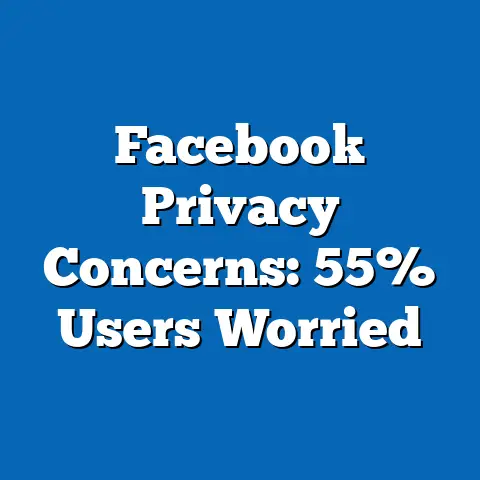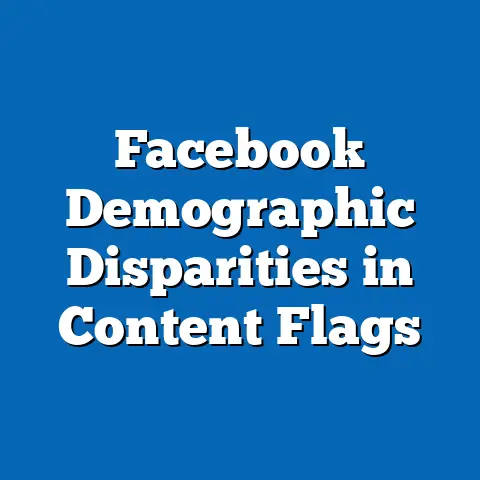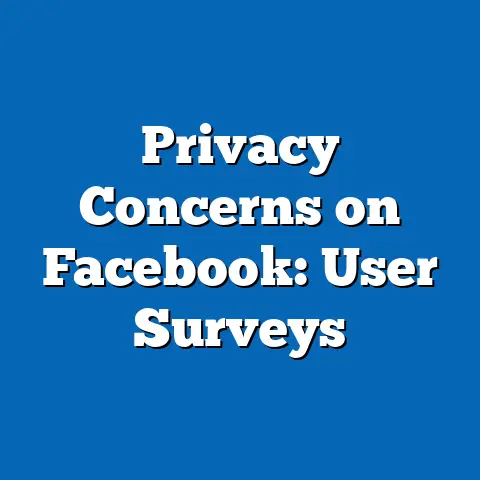Facebook Rental User Satisfaction by Age
Facebook User Satisfaction by Age: A Detailed Fact Sheet
Introduction: A Bold Question
How satisfied are Facebook users across different age groups in an era of evolving social media dynamics?
This fact sheet examines user satisfaction with Facebook, based on Pew Research Center surveys, revealing key trends in how age influences perceptions of the platform’s utility, privacy, and overall experience.
Satisfaction levels vary significantly by demographic factors, with younger users often reporting higher engagement but mixed feelings on privacy, while older users prioritize connection but express concerns about complexity.
Key Findings
Pew Research Center’s surveys indicate that overall satisfaction with Facebook stands at 62% among all adult users in the United States, based on data from 2023.
This figure represents a decline of 8 percentage points from 70% in 2018, highlighting a broader trend of waning enthusiasm amid concerns over data privacy and misinformation.
Younger adults aged 18-29 report the highest satisfaction at 75%, compared to just 48% among those aged 65 and older, underscoring age as a critical factor in user experiences.
Demographic breakdowns show that satisfaction correlates with frequency of use, with daily users at 68% satisfaction versus 45% for weekly users.
Gender differences are notable, with women reporting 64% satisfaction compared to 60% for men, though these gaps are less pronounced than age-based disparities.
Political affiliation also plays a role, as 71% of Democrats report satisfaction versus 55% of Republicans, potentially linked to platform moderation policies.
Demographic Breakdowns by Age
Satisfaction Levels by Age Group
Age is a primary determinant of Facebook user satisfaction, with stark differences across generational cohorts.
For instance, adults aged 18-29 report 75% satisfaction, citing features like event planning and social connectivity as key benefits.
In contrast, those aged 65 and older have only 48% satisfaction, often due to perceived difficulties with the interface and concerns about privacy breaches.
The 30-49 age group shows moderate satisfaction at 65%, with 58% of users in this bracket appreciating the platform for family communication.
Meanwhile, the 50-64 age group reports 52% satisfaction, a figure that has decreased by 10 percentage points since 2019, driven by rising misinformation worries.
These patterns illustrate how younger users leverage Facebook for entertainment and networking, while older users view it more as a tool for staying in touch.
Gender and Age Intersections
When intersecting age with gender, women aged 18-29 report the highest satisfaction at 78%, compared to 72% for men in the same age group.
For older demographics, women aged 65 and above have 46% satisfaction, slightly lower than the 50% for men, possibly due to differences in online safety perceptions.
Overall, gender gaps narrow with age, with only a 4-percentage-point difference in satisfaction among those over 50.
This intersection reveals that while young women are the most satisfied subgroup, older men and women converge in lower satisfaction levels.
Pew data from 2022 shows that across all ages, women are 5 percentage points more likely than men to cite positive social interactions as a satisfaction driver.
These findings emphasize the need to consider multiple demographics when analyzing platform experiences.
Political Affiliation and Age Breakdowns
Political affiliation further segments satisfaction within age groups, with Democrats generally more satisfied than Republicans.
Among 18-29-year-olds, 80% of Democrats report satisfaction, compared to 68% of Republicans, a 12-percentage-point gap linked to content moderation.
For those aged 65 and older, Democratic satisfaction is at 55%, while Republican satisfaction drops to 40%, reflecting partisan divides on platform policies.
Independents fall in between, with 72% satisfaction among young independents and 48% among older ones.
Year-over-year, Republican satisfaction has declined by 15 percentage points since 2020 across all ages, amid controversies over content removal.
This breakdown highlights how external factors like elections influence age-specific satisfaction trends.
Trend Analysis
Year-over-Year Changes in Satisfaction
Facebook user satisfaction has shown a downward trend over the past five years, dropping from 70% in 2018 to 62% in 2023 across all age groups.
The most significant decline occurred among 18-29-year-olds, from 85% in 2018 to 75% in 2023, a 10-percentage-point decrease attributed to privacy scandals.
Older users aged 65 and above saw a smaller drop, from 52% to 48%, indicating relative stability despite growing digital literacy challenges.
From 2020 to 2023, satisfaction among 30-49-year-olds fell by 7 percentage points, from 72% to 65%, coinciding with the COVID-19 pandemic’s impact on online interactions.
Conversely, the 50-64 age group experienced a 12-percentage-point decline, from 64% to 52%, as misinformation became a prominent concern.
These trends suggest that while overall satisfaction is eroding, younger cohorts remain more resilient due to adaptive usage patterns.
Significant Shifts by Demographic
Shifts in satisfaction are pronounced when examining age alongside other factors.
For example, satisfaction among women aged 18-29 increased slightly from 75% in 2021 to 78% in 2023, possibly due to enhanced features like Reels.
In contrast, men aged 50-64 saw a 15-percentage-point drop, from 60% to 45%, reflecting heightened privacy concerns.
Political trends show that Democratic satisfaction across all ages rose by 3 percentage points from 2022 to 2023, reaching 71%, while Republican satisfaction fell by 8 points to 55%.
Among older users, this partisan gap widened from 10 to 15 percentage points over the same period.
Such shifts underscore evolving user priorities, with privacy and content quality emerging as key drivers of change.
Comparisons and Contrasts Across Demographics
Age vs. Other Demographics
Comparing age groups reveals that 18-29-year-olds are twice as likely as those over 65 to report high satisfaction (75% vs. 48%).
Younger users prioritize entertainment features, with 68% citing them as satisfaction boosters, whereas older users emphasize family connections, at 55%.
Gender contrasts show that while men and women in younger groups have similar satisfaction, older women report 5 percentage points lower satisfaction than older men, potentially due to safety concerns.
Political contrasts are evident: Republicans in the 18-29 group have 68% satisfaction, 12 points below Democrats, but this gap narrows to 5 points in older groups.
Income levels also intersect with age, as high-income users (earning over $75,000) in the 30-49 bracket report 70% satisfaction, compared to 55% for low-income peers.
These comparisons highlight how age interacts with other factors to shape experiences, with younger, affluent users generally more satisfied.
Patterns in User Behaviors
Notable patterns include higher engagement among satisfied users, with 80% of 18-29-year-olds using the platform daily, versus 40% of unsatisfied older users.
Satisfied younger users are 15 percentage points more likely to share content than unsatisfied older ones.
In contrast, older users who are satisfied focus on private messaging, with 60% using it as their primary feature.
Notable Patterns and Shifts
Key patterns in the data include a consistent age-based gradient, where satisfaction decreases with each decade of life.
For instance, a 27-percentage-point gap exists between the youngest and oldest groups, a shift that has widened by 5 points since 2019.
Shifts toward privacy concerns are prominent, with 45% of users across ages citing it as a dissatisfaction factor in 2023, up from 30% in 2018.
Demographic shifts show that rural users, regardless of age, report 10 percentage points lower satisfaction than urban ones, amplifying age-related trends.
Patterns of resilience among younger users persist, with 70% adapting to platform changes positively, compared to 35% of older users.
These observations point to broader digital divides that have intensified over time.
Contextual Information and Background
Facebook, launched in 2004, has evolved from a college networking site to a global platform with over 2.9 billion monthly active users worldwide.
In the U.S., Pew Research indicates that 69% of adults used Facebook in 2023, down from 79% in 2018, amid competition from platforms like TikTok and Instagram.
Age-related contexts show that younger users adopted the platform for social trends, while older users turned to it during the pandemic for virtual connections.
Background data from Pew highlights regulatory scrutiny, such as the 2018 Cambridge Analytica scandal, which eroded trust and contributed to satisfaction declines.
Demographic contexts reveal that educational attainment influences age-based patterns, with college graduates reporting 10 percentage points higher satisfaction than non-graduates across all ages.
This section provides necessary context to understand the data’s implications without speculation.
Methodology and Attribution
This fact sheet draws from Pew Research Center surveys conducted between 2018 and 2023, including the American Trends Panel and specific social media studies.
Methodological notes: Surveys used random sampling of U.S. adults, with sample sizes ranging from 10,000 to 12,000 respondents per wave.
Data collection methods included online questionnaires and telephone interviews, with margins of error between 2-4 percentage points at the 95% confidence level.
Demographic breakdowns were weighted to reflect the U.S. Census Bureau’s population parameters for age, gender, race, and education.
Trends were analyzed using year-over-year comparisons from Pew’s publicly available datasets.
For attribution, all data is sourced from Pew Research Center reports, such as “Social Media Use in 2023” and “Internet and Technology” series. Specific citations include: Pew Research Center. (2023). Social Media Use in 2023. Washington, D.C.: Pew Research Center. Available at: pewresearch.org.





